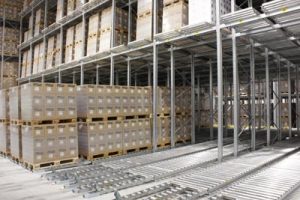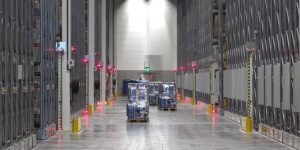The Structure of a Cold Storage Warehouse: Preserving Perishables in Precision
When it comes to preserving perishable goods, cold storage warehouses play a pivotal role in maintaining the freshness and quality of products. These specialized facilities are designed with a meticulous structure to create an environment where temperature and humidity are controlled with precision. In this article, we will delve into the intricacies of a cold storage warehouse’s structure, exploring the key components and technologies that make it possible to keep products like fruits, vegetables, dairy, and pharmaceuticals in optimal condition. What is the structure of a cold storage warehouse?
The Essential Components of a Cold Storage Warehouse
A cold storage warehouse comprises various critical components, each serving a unique purpose to ensure the preservation of perishable goods. Let’s break down these components:
1. Insulated Walls and Roof
The first line of defense against external temperature fluctuations is the building’s structure itself. Cold storage warehouses are typically constructed with insulated walls and roofs. These materials have low thermal conductivity, helping to minimize the transfer of heat from the outside to the interior. Common insulation materials include foam panels, fiberglass, and concrete with insulating properties.

2. Temperature Control Systems
Precise temperature control is the heart of any cold storage warehouse. Industrial refrigeration systems are employed to regulate the temperature within the facility. These systems consist of compressors, evaporators, condensers, and refrigerants that work together to maintain the desired temperature range. Modern warehouses often utilize computerized control systems to monitor and adjust temperatures, ensuring uniformity throughout the storage area.
3. Humidity Control
Humidity control is equally vital, especially for products like fruits and vegetables that are sensitive to moisture levels. Humidifiers and dehumidifiers are employed to maintain the optimal humidity levels required for different goods. This control prevents items from drying out or becoming overly moist, preserving their quality and appearance.
4. Air Circulation Systems
Effective air circulation is crucial to prevent temperature stratification within the storage area. Large fans distribute the cold air evenly, ensuring that no area is significantly warmer or colder than the rest. This uniformity is essential for preserving product quality and preventing temperature-related damage.
5. Racking and Shelving
Inside the cold storage warehouse, racking and shelving systems are used to organize and store products efficiently. These structures are designed to allow for maximum air circulation while providing stable support for the stored goods. Different types of racking systems are used based on the specific requirements of the products being stored.
6. Flooring and Drainage
The flooring in a cold storage warehouse is typically made from materials that can withstand low temperatures and are easy to clean. Additionally, efficient drainage systems are essential to remove any water or condensation that may accumulate, preventing slips and maintaining a safe environment.
7. Loading Docks and Doors
Cold storage warehouses have specialized loading docks and doors designed to minimize temperature fluctuations during the loading and unloading of products. These docks are equipped with seals and insulation to maintain the cold chain integrity while goods are transferred.
8. Security and Access Control
Security is a top priority in cold storage warehouses to protect valuable perishable goods. Access control systems, surveillance cameras, and security personnel are often employed to ensure the facility’s security and prevent unauthorized access.
Advanced Technologies in Cold Storage Warehouses
As technology continues to advance, cold storage warehouses are incorporating innovative solutions to enhance efficiency and sustainability. Here are some cutting-edge technologies used in modern cold storage facilities:
1. Automated Storage and Retrieval Systems (AS/RS)
AS/RS systems use robotics and automation to efficiently store and retrieve products. These systems optimize space utilization, reduce labor costs, and minimize the chances of human error in inventory management.
2. Energy-Efficient Refrigeration Systems
To reduce energy consumption and environmental impact, many cold storage warehouses are adopting energy-efficient refrigeration systems. These systems use advanced technologies like variable-speed compressors and heat recovery to optimize energy usage.
3. RFID and IoT Sensors
RFID (Radio-Frequency Identification) tags and IoT (Internet of Things) sensors are used for real-time monitoring of products and environmental conditions. They provide valuable data on temperature, humidity, and product shelf life, allowing for better inventory management and quality control.

4. Solar Power and Green Technologies
In an effort to reduce their carbon footprint, some cold storage warehouses are integrating solar power and other green technologies into their operations. Solar panels on the roof can generate electricity to power the facility, making it more sustainable and environmentally friendly.
Conclusion
Cold storage warehouses are the unsung heroes of the perishable goods industry, preserving the quality and safety of products from farm to table. Their meticulous structure, temperature control systems, and advanced technologies work in harmony to ensure that consumers can enjoy fresh fruits, vegetables, dairy products, and pharmaceuticals year-round. As technology continues to evolve, we can expect even greater efficiency and sustainability in the world of cold storage, contributing to both food security and environmental conservation. Find the designing process here.

Recent Comments